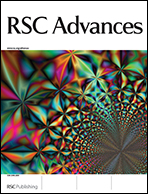We investigated the nature of the visible-light-driven photochemical reactions of the Ru(II) polypyridyl complexes [Ru(II)(L)(bpy)2](PF6)n (bpy = 2,2′-bipyridine; L = phbn, n = 1; L = pad, n = 1; L = pbn, n = 2) with Et3N as a sacrificial reductant on the basis of density functional calculations. It is estimated that the reduction of the photo-excited species [Ru*(II)(L)(bpy)2]n+ to [Ru(II)(L−) (bpy)2](n−1)+ is moderately endothermic, the protonation of the latter to [Ru(II)(LH)(bpy)2]n+ substantially exothermic, and the bimolecular hydrogen-transfer interaction of the latter to [Ru(II)(LHH)(bpy)2]n+ and [Ru(II)(L)(bpy)2]n+ weakly exothermic. The amount of visible-light energy that the Ru(II) polypyridyl complexes 1–3 can store by forming one N–H and one C–H bond is of the order of ∼20–30 kcal mol−1. The visible-light absorption of [Ru(II)(L)(bpy)2]n+ forming the photo-excited species [Ru*(II)(L)(bpy)2]n+ induces electron loss in the ligand L, showing that the character of the ligand-to-metal charge transfer is stronger than that of the metal-to-ligand charge transfer.

You have access to this article
 Please wait while we load your content...
Something went wrong. Try again?
Please wait while we load your content...
Something went wrong. Try again?


 Please wait while we load your content...
Please wait while we load your content...